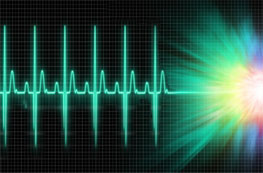
 |
Death and Modern Science: CLICK HERE to Link to Full Paper |
ABRIDGED LAY LANGUAGE ABSTRACT
Over hundreds of millions of years of the Earth's history, there were explosions of life followed by mass extinctions. During those years, many wondrous and strange species of animals were born and died. Their biodegradable bodies turned into dust and sometimes oil. But what if their bodies had not been biodegradable? Then early on, the land mass of the Earth would have been strewn with the preserved bodies of millions of species, including huge dinosaurs.
Evolution could not have proceeded as it did, culminating in humans. This is because evolution favored carnivores that were big and strong like the large dinosaurs. But if the preserved bodies of bygone animals provided a plentiful supply of meat, then big and strong would not have been as much of an advantage. In this ironic sense, we owe our lives to the death and biodegradable bodies of Earth's animals (including us).
____________________
Present events do not cease to exist when they become past events. Rather, present events are characterized by a strong brightness or probability of detection (technically, this is called amplitude). They become past events when their brightness dims abruptly and dramatically. But their brightness never goes to zero, there is always some small chance of detecting past events. (Because the quantum mechanical wave function has a nonzero amplitude everywhere in space and time.) But the strong brightness of present events blots out past events just as the daytime sun blots out the stars.
This means we cannot detect the energy of past events unless we block out present events and greatly amplify the energy of past events. For example, if an event happened on the moon, then we would have detected it after one second because that is about how long it takes light to travel here from the moon. But if we could make it appear as if the event had happened on the sun, then we could detect the event eight minutes later, even though the event was only one second old, because it takes about eight minutes for light to travel here from the sun. Get it? Something happened one second ago but we can detect it happening eight minutes later. We are seeing the past. But because of the very high speed of light, this means we can only detect the energy of past events when they are only slightly in the past. 1
Interestingly, the unconscious mind does not detect energetic sensory data and may not be limited to detecting the very bright events of the present. This is consistent with the many experts who believe that the unconscious mind is timeless. If so, this would give some credence to the phenomena of parapsychology, such as precognition and ESP. Moreover, we can ask a profound question based upon special relativity:
Is the death of the organic brain at a time specified by its proper, inertial reference frame synchronized with the death of the unconscious mind?
If not, then this would be something like an afterlife.
1. See A. D. Allen (1998). Method for Measuring Retarded Light Through Very Long Baseline Interferometry and Natural or Artificial Diffraction Effects. U. S. Patent No. 5,847,830.